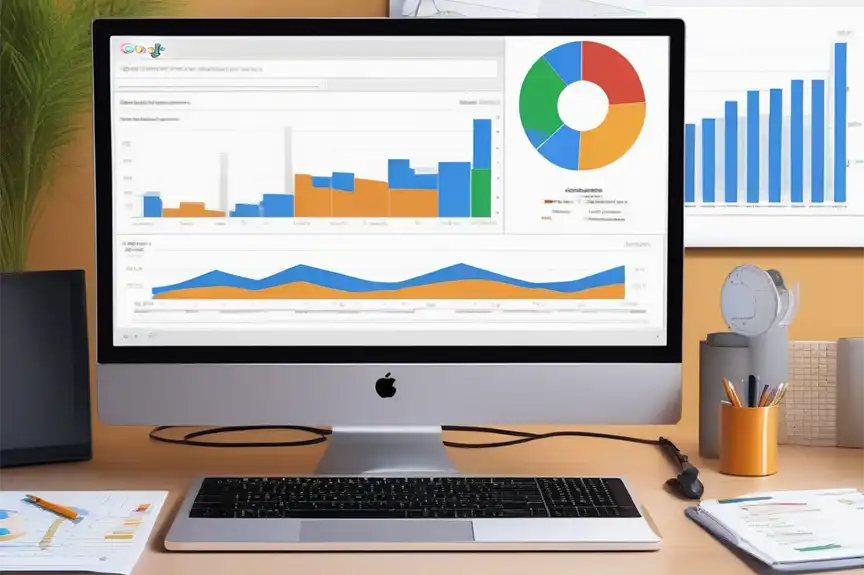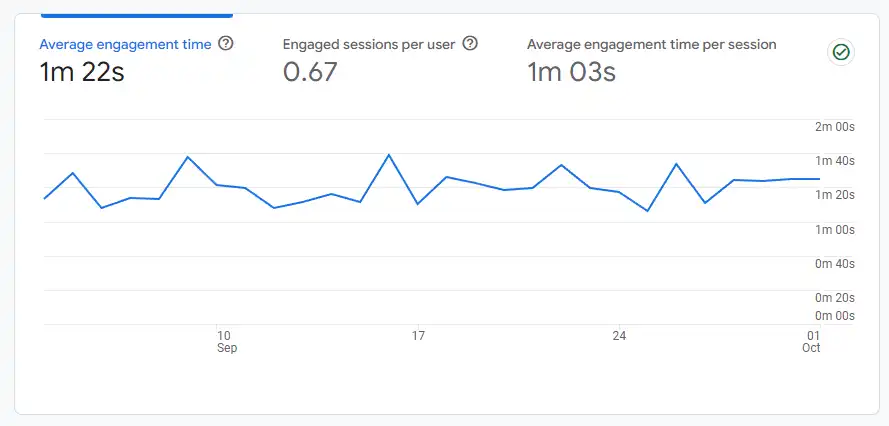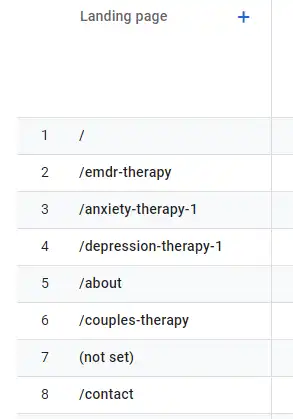Over the Summer of 2023, Google Analytics updated to its latest version, called Google Analytics 4 (or UA4). Not only has the rollout changed the layout of Google Analytics but it’s also changed the way Google Analytics collects data.
You may have noticed changes to your own Google Analytics data for your Private Practice website. In some cases, dramatic changes. This is especially true for websites that had a number of high-ranking blog posts.
But not to worry!
Despite seeing some different numbers your site is likely OK. We just have to understand how the new Analytics is processing your site’s data—which is why we put together this article.
In this brief overview we’ll be referring to New Analytics (Google Analytics 4 or GA4) and Old Analytics (Universal Analytics or UA), by “New” and “Old” to keep our words as simple as possible.
Note: Google has automatically updated all of the Old (UA) Analytics accounts to the new version of Analytics (UA4), so even if you haven’t manually changed your Analytics you should be on the new (UA4) version now.

A Different Kind Of User
The biggest change with the New Analytics (as far as Private Practice websites are concerned) may be in how Users are defined.
Only engaged users in the New Analytics (GA4) count as a Session—these engaged users also called Active Users. (Yes, this is a lot of terminology already, but we’ll do our best to keep it simple.)
In the Old Analytics (UA), the word “User” referred to everyone, whether they were engaged or not. Even if they accidentally landed on your site and just idled around, they still counted as a User.
So if you had a lot of traffic coming to your site through blogs you may have noticed a significant drop in overall Users, since migrating to the new version of Analytics.
Why? Because blogs tend to have a high bounce rate, meaning more non-engaged Users, who in the new Analytics don’t count towards your Active Users.
This may result in a distinct difference in your User metrics, between the Old and New Analytics. Google themselves say…
It is not unusual for there to be apparent discrepancies in user related data between Google Analytics 4 and Universal Analytics. Pageview discrepancies of up to 10% and user and session related discrepancies of up 20% can be expected and are not a cause for concern.
And this discrepancy can also be much higher.
The point being… whereas in the Old Analytics, those bouncing users would have been factored into your User data, in the new Analytics they get discounted.
So, really, the new calculation for Users is more helpful, as it’s giving a better picture of how many Users are actually engaged on your site.
Though, seeing a number decline can be disheartening, keep in mind that when a number goes up it doesn’t necessarily mean your Private Practice is being seen by more people who matter: your potential clients. This is why high traffic blog posts aren’t always a boon in and of themselves as far as getting directly in contact with potential clients (though they do help your website).
How Should You Use The New Analytics For Your Practice?
When we look at Analytics we check a number of variables to determine a site’s health, but here we just want to highlight a few metrics in the New Analytics you can look at.
After logging into analytics.google.com, take a look at the navigation menu on the left hand side of the screen. From here we want to take a look at Engagement / Overview:

Ideally, we like to see Average Engagement time be over 1 minute, as this means that people landing on your site are interacting with the pages and posts on your site, i.e. they’re scrolling and clicking and reading.
If, say, the engagement time was 20 seconds, that might indicate an issue with your website.
These numbers can be a bit subjective, but just based on average reading speeds, we know that over a minute means people are reading. And if they’re reading, they’re engaged.
Now, under the same menu, let’s take a look at Landing Pages, i.e. click “Landing Pages”.
From here we can see what pages people are landing on (whether they be coming from Google or Facebook or Psychology Today or wherever).

Typically, what we expect to see is your Homepage at the top, followed by your Specialty Pages.
(A “/” or blank space refers to your homepage.)
If your site has high ranking blog posts, then they may appear at the top of the Landing Pages. That’s OK! Blog pages tend to generate more traffic than any other post—when Google ranks them well for a high-trafficked keyword.
Combined with Serpfox, the Landing Page section of Analytics tells us if the right pages are connecting with Potential Clients: your Specialty Pages.
If, say, we see an Anxiety Page, and it’s not getting traffic, then that might mean it’s time to reexamine the page: maybe it needs more information, or it’s not interlinked properly, or it’s just plain old (something you put together in 2014) and lacks enough verbiage to rank on Google.
New Analytics, New Data
So, the new Google Analytics (UA4) hasn’t really changed the data on your website—just how it presents itself.
And the New version really is more helpful (even though you may have seen a decrease in traffic). The New Analytics gives a more accurate picture of how many people are landing on your site and interacting with it.
This is better than getting a skewed version of your visitors, where those who aren’t really engaging are being counted in the metrics.
With the New Analytics it’s easier to understand if your Private Practice website is working as it should, and being engaged by the most important site visitors of all: your potential clients.

